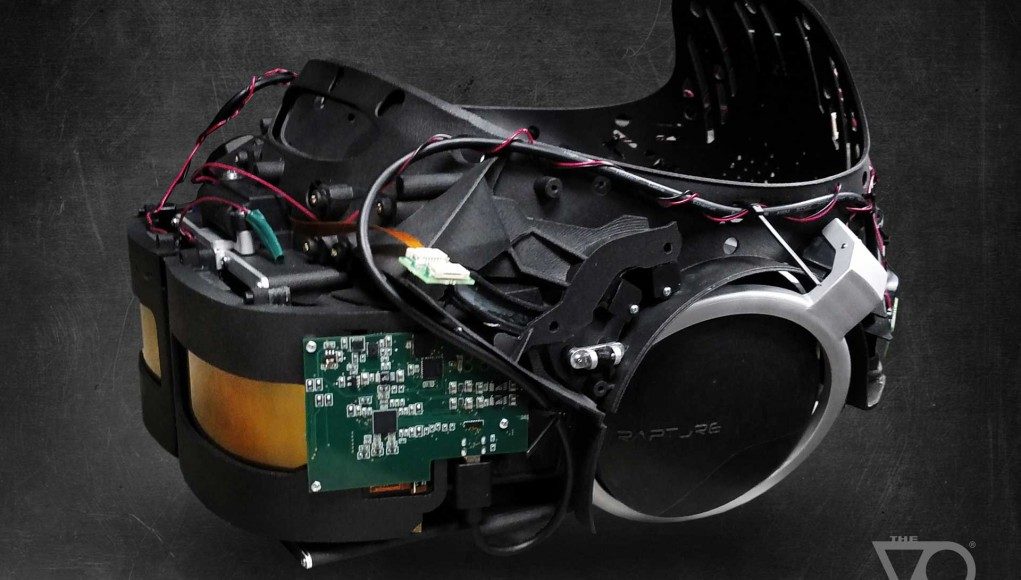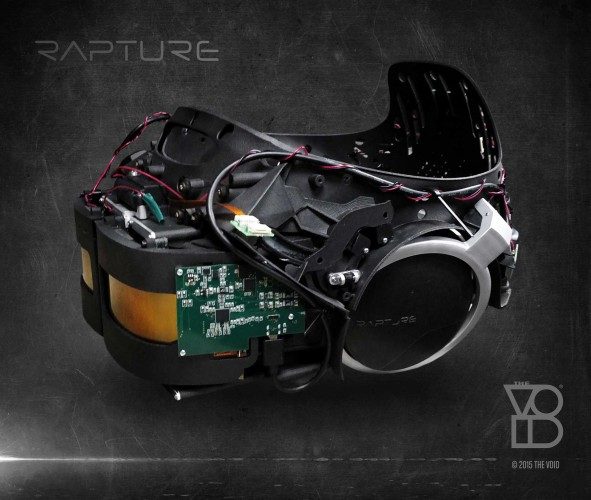Here’s an early look at the first version of Rapture, the VR headset you’ll use when you enter The Void virtual reality attraction, opening to the public next year. Packing dual curved OLED displays, it’s a serious looking piece of kit.
We’ve been following The Void, a virtual reality entertainment destination, from the start. We brought you breaking news of the attraction’s existence earlier in the year and then the first hands-on taste of what to expect when you step inside.
See Also: First Hands-on: The VOID, a Mixed Reality Experience That Blends Real and Virtual
Up to now The Void, which aims to fuse both virtual and physical experiences played out in custom-built arenas, has been demonstrated on retro-fitted Oculus Rift DK2 headsets. The Void’s custom tracking system being tacked onto the player’s backtop-powered experience whilst the company worked quietly on perhaps one of their biggest selling points: a custom designed and built VR headset which aims to deliver what the company hopes will be a superior VR experience. It’s called Rapture and the company behind the new hardware has released the first image of a working prototype, in all its naked glory.
The Void presented recently at Dutch VR Days conference and went into some of the technology behind the experience, so we know some details about the VR headset.
Ken Bretschneider, founder of The Void, says he personally contributed $250,000 into the development of Rapture, a device he’s clearly quite proud of. Packing dual curved OLED displays, the headset purportedly delivers a 2K per-eye resolution and with that unique display form factor, a claimed 180 degree field of view. Although it’s impossible to accurately compare, as methods for measuring such things are yet to be standardised, the Rift DK2 offers an FOV of around 100 degrees. An impressive upgrade if the optics can thwart what must be some extreme optical challenges.
In order to deal with artefacts of their unusual display setup, the company says they’ve developed custom dual-lens optics. Bretschneider claims that the combination of displays and optics deliver stereo overlap of 53 degrees.
The video below shows Bretschneider sharing some details of the headset at the Dutch VR Days (starting at 53 minutes):
Speaking to the advantage The Void has over consumer hardware—namely, a lack restrictive retail price target—The Void’s designers packed ‘high end’ headphones, in this case from Bang and Olufsen, which deliver binaural audio to the player. Integrated microphones top off the hardware list, important for The Void’s intended multi-player experiences.
See Also: VR Theme Park ‘The VOID’ Begins Beta Testing, Reservations “Sold Out within Hours”
The Void is trialling beta experiences right now, although reservations for the remainder of the year’s sessions sold out within hours of going on sale. It’s not yet clear if those trials will include the new Rapture headsets as part of the experience.
This hardware is still in prototype form as The Void team continues to create its ambitious inaugural VR attraction based in Salt Lake City, Utah, due to open at some point in 2016. No precise dates on when you’ll be able to book your first date with the Rapture VR headset, but we can’t wait to get a taste of a VR backed by hardware built without the restrictions of consumer pricing.
Additional reporting provided by Chris Madsen








